Pirates, Parrots and Adjectives
£3.00
This lesson looks at the settings, characters and plots of pirate stories. Activities include completing a story mountain and it also focuses on using adjectives to describe pirates and settings.
There is a five-minute evidence-based CPD activity at the end of this lesson which will develop classroom teachers’ skill set. This CPD consists of a research extract on self-assessment with a five-minute activity based on this extract.
Description
These evidence-based learning (EBL) lessons are based on classroom practice that has been proven, by research, to maximise thinking, learning and attainment. From an extensive review of educational research, we identified the eight key classroom thinking and learning skills that were common across these research papers. We named these eight key skills “EBL skills”.
EBL skills have been proven by research to maximise learning because they combine the most productive thinking skills with the most effective learning behaviours. Each of our evidence-based learning lessons uses the English curriculum as a framework through which the eight EBL skills are delivered.
Teachers also have the opportunity to add to their own skill set or refresh their existing skills with our five-minute CPD activity, based on one of the EBL skills used in this lesson.
The skills in bold below are the EBL skills developed in this Pirate lesson. Click on each skill to learn more about that skill.
- Collaboration
- Thinking Skills
- Peer Assessment
- Peer Teaching
- Self-Assessment
- Metacognition
- Self-Regulation
- Independent Learning
1 review for Pirates, Parrots and Adjectives
Only logged in customers who have purchased this product may leave a review.
Related products
-


Y5 Rabbit Holes and Wardrobes
£3.00 Add to basket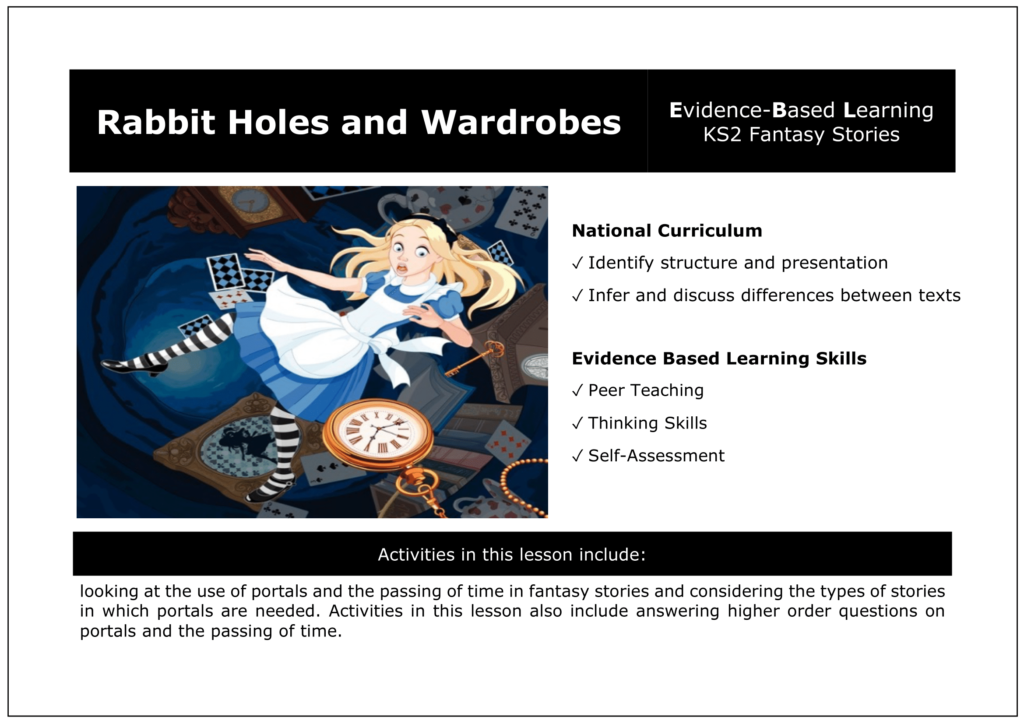 £3.00Add to basket
£3.00Add to basketKS2 National Curriculum:
✓ Identify structure and presentation
✓ Infer and discuss differences between textsActivities in this lesson include looking at the use of portals and the passing of time in fantasy stories and considering the types of stories in which portals are needed. Activities in this lesson also include answering higher order questions on portals and the passing of time.
There is a five-minute evidence-based CPD activity at the end of this lesson which will develop classroom teachers’ skill set. This CPD consists of a research extract on self-assessment with a five-minute activity based on this extract.
VIEW -

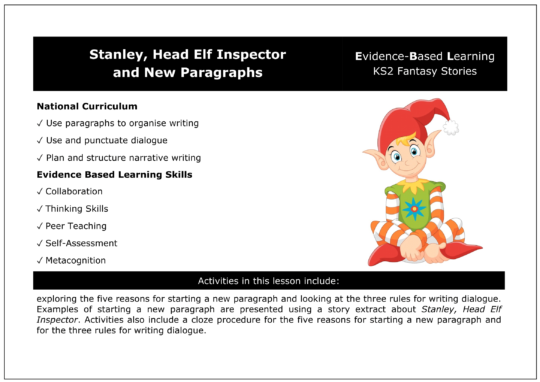
Y5 Stanley, Head Elf Inspector and New Paragraphs
£3.00 Add to basket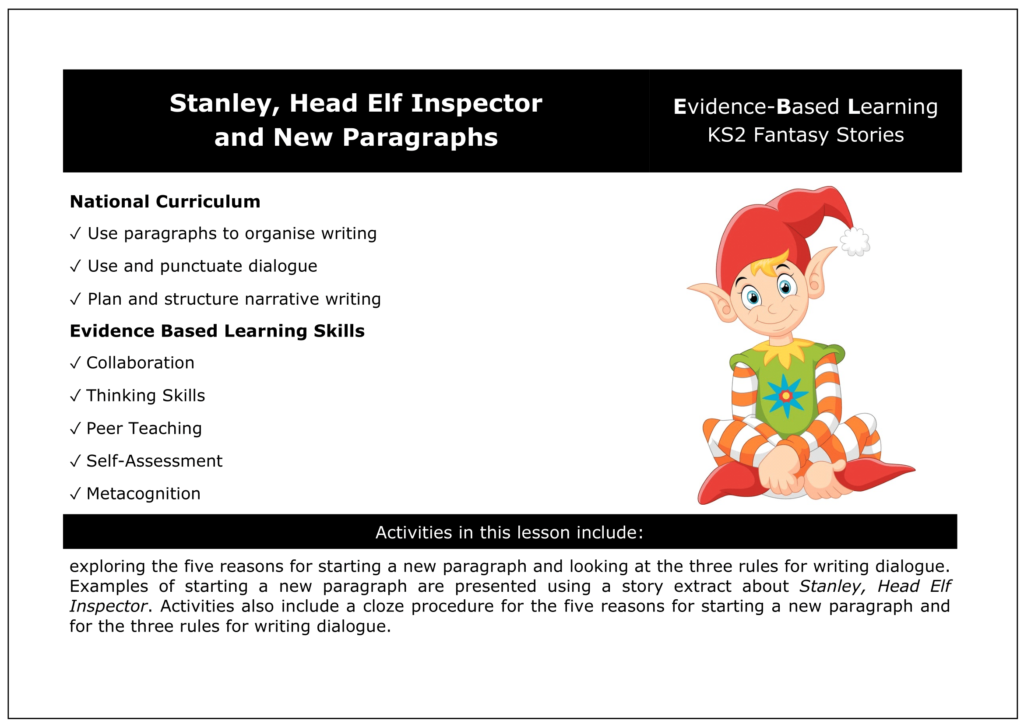 £3.00Add to basket
£3.00Add to basketKS2 National Curriculum:
✓ Use paragraphs to organise writing
✓ Use and punctuate dialogue
✓ Plan and structure narrative writingActivities in this lesson include exploring the five reasons for starting a new paragraph and looking at the three rules for writing dialogue. Examples of starting a new paragraph are presented using a story extract about Stanley, Head Elf Inspector. Activities also include a close procedure for the five reasons for starting a new paragraph and also for the three rules for writing dialogue.
There is a five-minute evidence-based CPD activity at the end of this lesson which will develop classroom teachers’ skill set. This CPD consists of a research extract on self-assessment with a five-minute activity based on this extract.
VIEW -

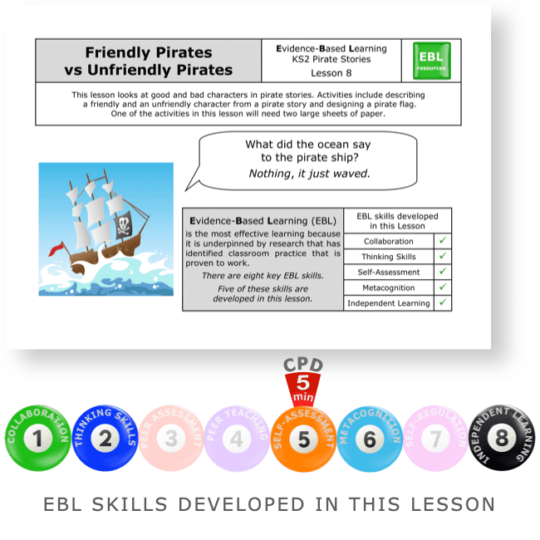
Friendly Pirates vs Unfriendly Pirates
£3.00 Add to basket £3.00Add to basket
£3.00Add to basketThis lesson looks at good and bad characters in pirate stories. Activities include describing a friendly and an unfriendly character from a pirate story and designing a pirate flag. One of the activities in this lesson will need two large sheets of paper.
There is a five-minute evidence-based CPD activity at the end of this lesson which will develop classroom teachers’ skill set. This CPD consists of a research extract on self-assessment with a five-minute activity based on this extract.
VIEW -


Captain Black and the Pronoun
£3.00 Add to basket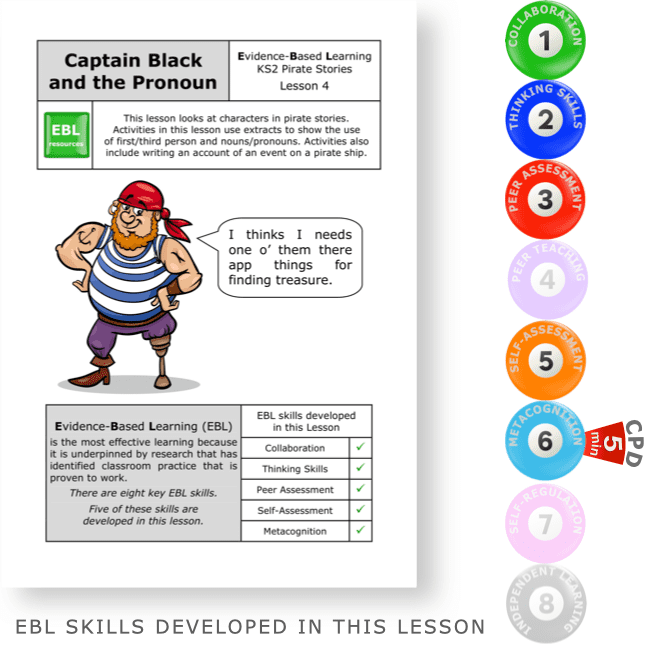 £3.00Add to basket
£3.00Add to basketThis lesson looks at characters in pirate stories. Activities in this lesson use extracts to show the use of first/third person and nouns/pronouns. Activities also include writing an account of an event on a pirate ship.
There is a five-minute evidence-based CPD activity at the end of this lesson which will develop classroom teachers’ skill set. This CPD consists of a research extract on metacognition with a five-minute activity based on this extract.
VIEW



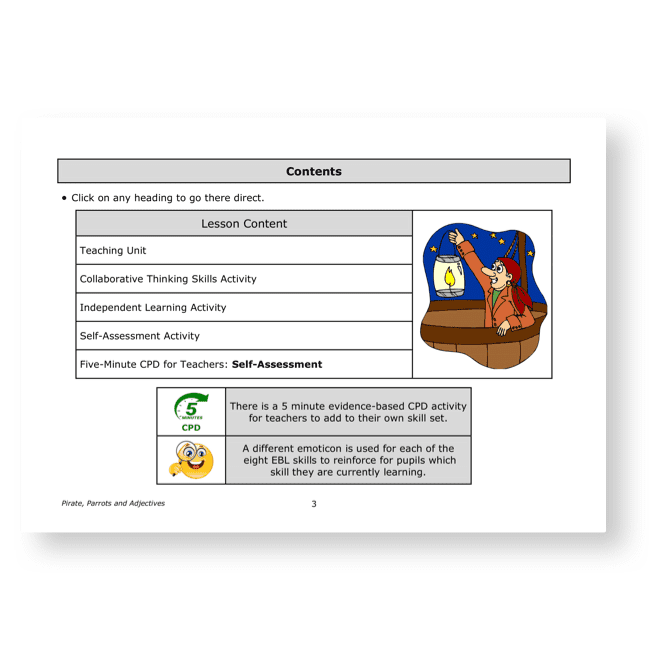
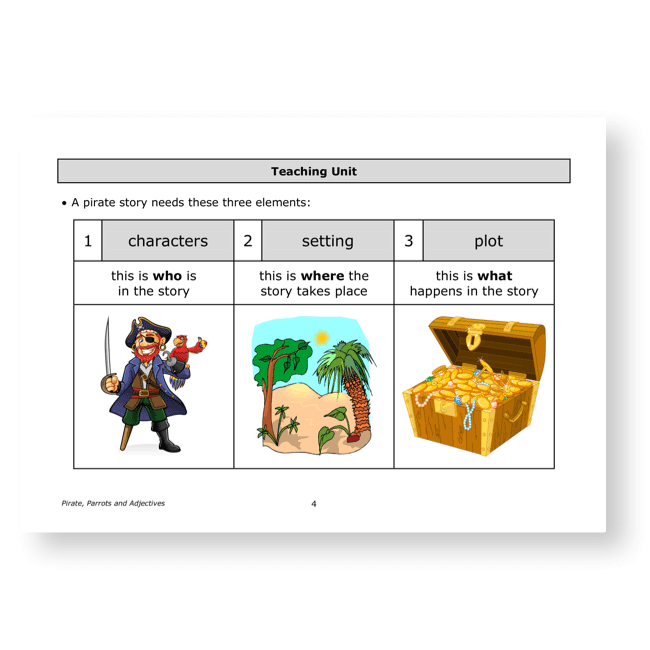
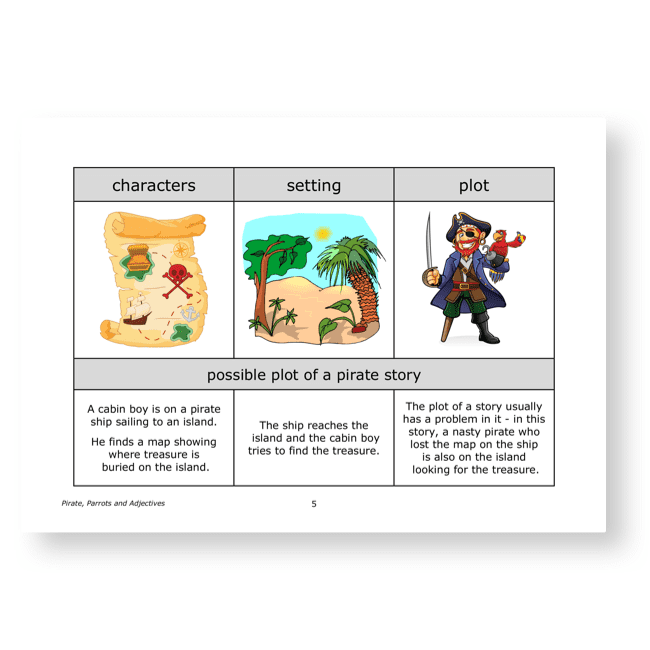

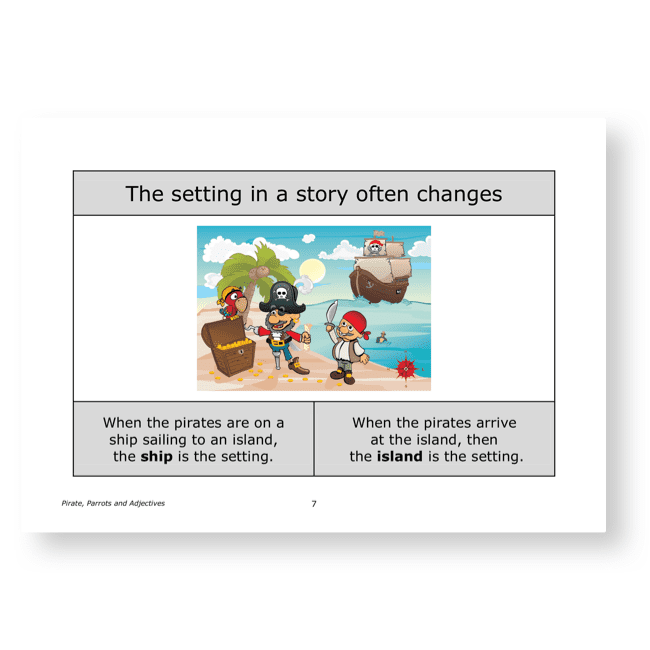

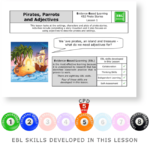
Philipem (verified owner) –
We asked a.i. to evaluate this lesson. This is what it said:
Teaching Pirates and More! An Excellent Resource for KS2 English and Evidence-Based Learning
Are you looking for an engaging resource to teach key English skills like nouns, adjectives, and story structure? Do you also want to develop vital evidence-based learning abilities in your KS2 students? Then look no further than the Pirates, Parrots and Adjectives lesson plan.
This brilliant resource uses the popular pirates genre to teach essential literary concepts like setting, characters, plot, and the correct use of descriptive language. Students will find the pirate theme intriguing as they complete activities like mapping out a story mountain and using vibrant adjectives to depict pirate characters and island settings.
But the learning doesn’t stop with English skills alone. This resource is specifically designed to build key evidence-based learning (EBL) abilities like collaboration, self-assessment, and independent learning skills. So your students will be gaining the critical expertise needed to maximise achievement across all subjects while immersed in pirate adventures.
The lesson plan even has a 5-minute professional development activity for teachers to extend their own understanding of vital concepts like the link between self-assessment and independent learning.
Any KS2 teacher wanting to cover English objectives in an appealing way while developing crucial learning abilities should have this resource in their toolkit. I give the Pirates, Parrots and Adjectives lesson plan 5 stars for its ability to teach English and evidence-based learning in a fun and meaningful package students won’t soon forget.